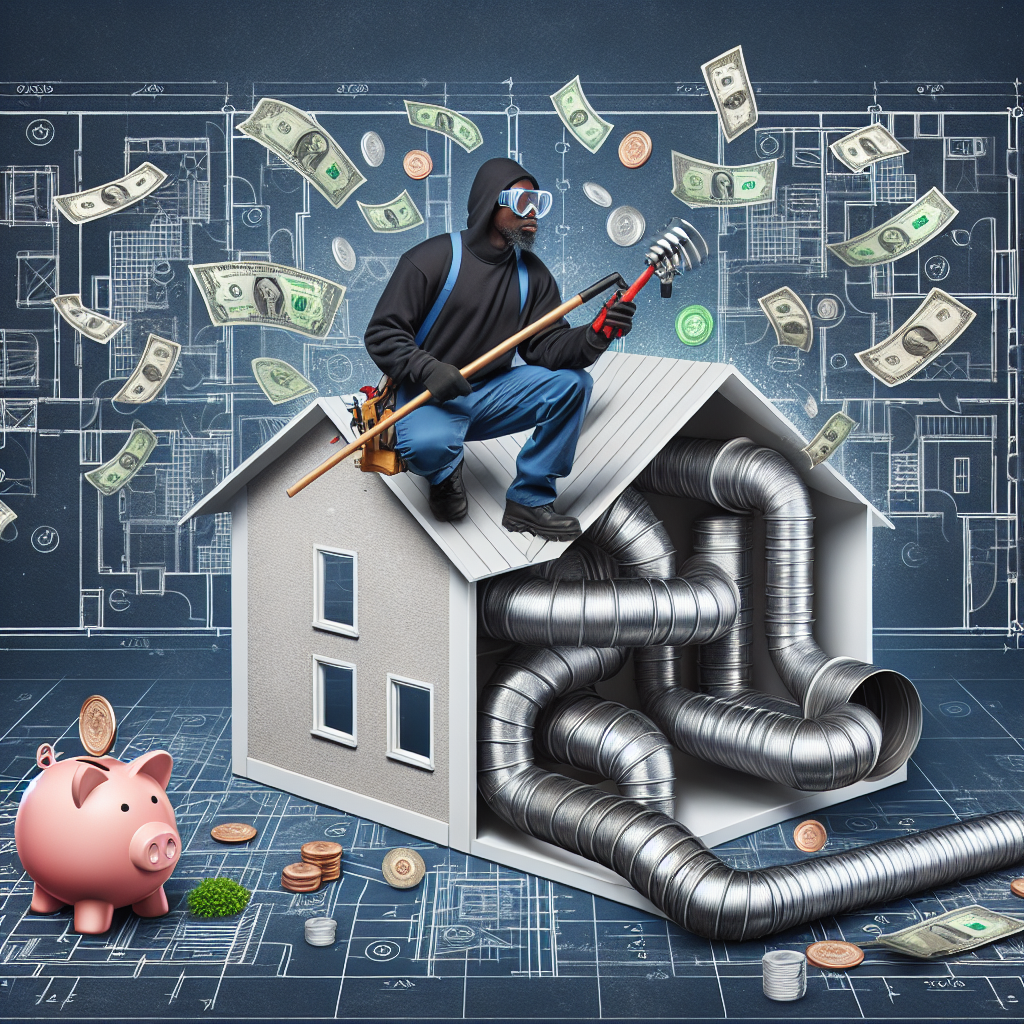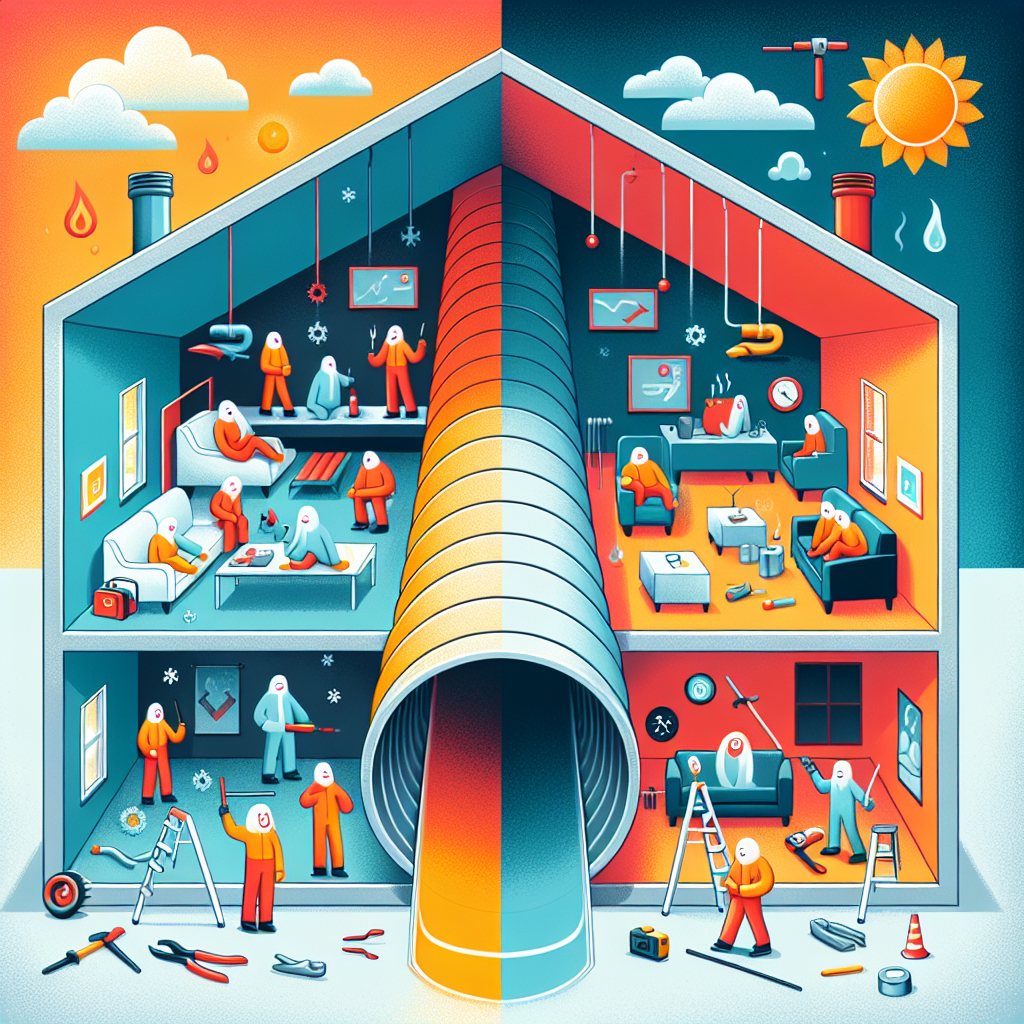Introduction
Uncovering Hidden Savings: The Power of Duct Testing
Duct testing is a crucial step in ensuring the efficiency and effectiveness of a building’s HVAC system. By identifying and repairing leaks in the ductwork, building owners can save money on energy costs and improve indoor air quality. In this article, we will explore the importance of duct testing and how it can help uncover hidden savings for building owners.
How Duct Testing Can Save You Money on Your Home Energy Bills
When it comes to saving money on your home energy bills, there are a variety of strategies you can employ. From upgrading to energy-efficient appliances to improving insulation, there are many ways to reduce your energy consumption and lower your monthly expenses. One often overlooked method of saving money on energy bills is through duct testing.
Duct testing is a process that involves evaluating the efficiency of your home’s ductwork system. By identifying and repairing leaks and other issues in your ducts, you can improve the overall performance of your HVAC system and reduce energy waste. This can lead to significant savings on your energy bills over time.
One of the main benefits of duct testing is that it helps to ensure that your HVAC system is operating at peak efficiency. When there are leaks or other issues in your ductwork, your system has to work harder to heat or cool your home, which can lead to increased energy consumption. By identifying and repairing these issues, you can improve the efficiency of your system and reduce your energy usage.
In addition to improving efficiency, duct testing can also help to improve the overall comfort of your home. When there are leaks in your ductwork, it can lead to uneven heating and cooling throughout your home. By sealing these leaks, you can ensure that each room in your home is being properly heated or cooled, leading to a more comfortable living environment.
Another benefit of duct testing is that it can help to extend the life of your HVAC system. When your system has to work harder to heat or cool your home due to leaks in your ductwork, it can lead to increased wear and tear on the system. By identifying and repairing these issues, you can help to prolong the life of your HVAC system and avoid costly repairs or replacements in the future.
In addition to these benefits, duct testing can also help to improve the indoor air quality of your home. When there are leaks in your ductwork, it can allow dust, dirt, and other contaminants to enter your home’s air supply. By sealing these leaks, you can help to prevent these contaminants from entering your home, leading to a healthier living environment for you and your family.
Overall, duct testing is a valuable tool for homeowners looking to save money on their energy bills. By identifying and repairing leaks and other issues in your ductwork, you can improve the efficiency of your HVAC system, extend its life, and improve the comfort and air quality of your home. If you’re looking to uncover hidden savings in your home, consider scheduling a duct test today.
The Importance of Energy Rating Systems in Sacramento
Energy efficiency is a crucial aspect of modern living, especially in a city like Sacramento where extreme temperatures can lead to high energy bills. One often overlooked aspect of energy efficiency is the ductwork in homes and buildings. Duct testing is a powerful tool that can uncover hidden savings and improve the overall energy rating of a property.
Duct testing involves pressurizing the duct system to measure air leakage. This process can reveal leaks and inefficiencies that may be causing energy waste and driving up utility costs. By identifying and sealing these leaks, homeowners and building managers can improve the efficiency of their HVAC systems and reduce energy consumption.
In Sacramento, where summers can be scorching and winters chilly, having a well-sealed duct system is essential for maintaining a comfortable indoor environment without breaking the bank. Leaky ducts can allow conditioned air to escape, forcing the HVAC system to work harder to maintain the desired temperature. This not only wastes energy but also puts unnecessary strain on the system, leading to increased maintenance costs and a shorter lifespan.
By investing in duct testing, property owners can identify and address these issues, leading to significant energy savings and improved comfort. In fact, studies have shown that sealing duct leaks can reduce energy consumption by up to 30%, making it a cost-effective way to improve the energy rating of a property.
Furthermore, duct testing can also help improve indoor air quality by preventing pollutants and allergens from entering the duct system. Leaky ducts can allow dust, mold, and other contaminants to enter the air stream, leading to poor indoor air quality and potential health issues. By sealing these leaks, property owners can create a healthier living or working environment for occupants.
In addition to the energy and health benefits, duct testing can also help property owners comply with energy rating systems and building codes. Many energy rating systems, such as ENERGY STAR and LEED, require duct testing as part of the certification process. By conducting a duct test and addressing any issues that are identified, property owners can improve their energy rating and potentially qualify for incentives or rebates.
Overall, duct testing is a valuable tool for uncovering hidden savings and improving the energy efficiency of a property. By identifying and sealing duct leaks, property owners can reduce energy consumption, improve indoor air quality, and comply with energy rating systems. In a city like Sacramento, where energy costs can be high and extreme temperatures are common, duct testing is a smart investment that can lead to long-term savings and a more comfortable living or working environment.
In conclusion, duct testing is a powerful tool that should not be overlooked by property owners in Sacramento. By investing in duct testing, property owners can uncover hidden savings, improve energy efficiency, and create a healthier indoor environment. Whether it’s for residential or commercial properties, duct testing is a cost-effective way to improve the energy rating of a property and reduce utility costs in the long run.
Serving the Metropolitan Area: Uncovering Hidden Savings with Duct Testing
When it comes to saving money on energy bills, many homeowners overlook a crucial aspect of their HVAC system: the ductwork. Ducts are responsible for distributing heated or cooled air throughout your home, but if they are not properly sealed or insulated, they can waste a significant amount of energy. This is where duct testing comes in.
Duct testing is a process that involves evaluating the efficiency of your ductwork system. By identifying any leaks or inefficiencies, duct testing can help you uncover hidden savings on your energy bills. In fact, studies have shown that leaky ducts can account for up to 30% of energy loss in a home. By addressing these issues, you can improve the overall efficiency of your HVAC system and reduce your energy costs.
One of the main benefits of duct testing is that it can help you pinpoint areas of your ductwork that may be in need of repair or replacement. Leaky ducts can allow conditioned air to escape into unconditioned spaces, such as attics or crawl spaces, leading to wasted energy and higher utility bills. By identifying and sealing these leaks, you can ensure that your HVAC system is operating at peak efficiency.
In addition to identifying leaks, duct testing can also help you determine if your ductwork is properly insulated. Poor insulation can lead to heat loss in the winter and heat gain in the summer, forcing your HVAC system to work harder to maintain a comfortable temperature. By insulating your ductwork, you can reduce energy loss and improve the overall efficiency of your system.
Another benefit of duct testing is that it can help you identify any blockages or obstructions in your ductwork. Over time, dust, debris, and other contaminants can accumulate in your ducts, restricting airflow and reducing the efficiency of your HVAC system. By cleaning out these blockages, you can improve the airflow in your ducts and ensure that your system is operating at its best.
Overall, duct testing is a valuable tool for homeowners looking to save money on their energy bills. By identifying and addressing issues with your ductwork, you can improve the efficiency of your HVAC system and reduce your overall energy consumption. In addition to saving money, duct testing can also help improve the comfort and air quality in your home.
If you are interested in uncovering hidden savings with duct testing, it is important to work with a qualified HVAC professional. A trained technician can conduct a thorough evaluation of your ductwork system and provide recommendations for improvements. By investing in duct testing, you can enjoy lower energy bills, improved comfort, and a more efficient HVAC system.
Q&A
1. What is duct testing?
Duct testing is a process used to evaluate the efficiency of a building’s ductwork system.
2. Why is duct testing important?
Duct testing is important because it can uncover hidden leaks and inefficiencies in the ductwork system, which can lead to energy and cost savings.
3. How can duct testing help save money?
By identifying and repairing leaks and inefficiencies in the ductwork system, duct testing can help improve the overall efficiency of the HVAC system, leading to lower energy bills and cost savings.
Conclusion
In conclusion, duct testing can be a powerful tool for uncovering hidden savings in energy costs and improving the efficiency of HVAC systems. By identifying and addressing leaks and inefficiencies in ductwork, homeowners and businesses can save money on their energy bills and reduce their environmental impact. Investing in duct testing can lead to long-term savings and improved comfort in indoor spaces.

